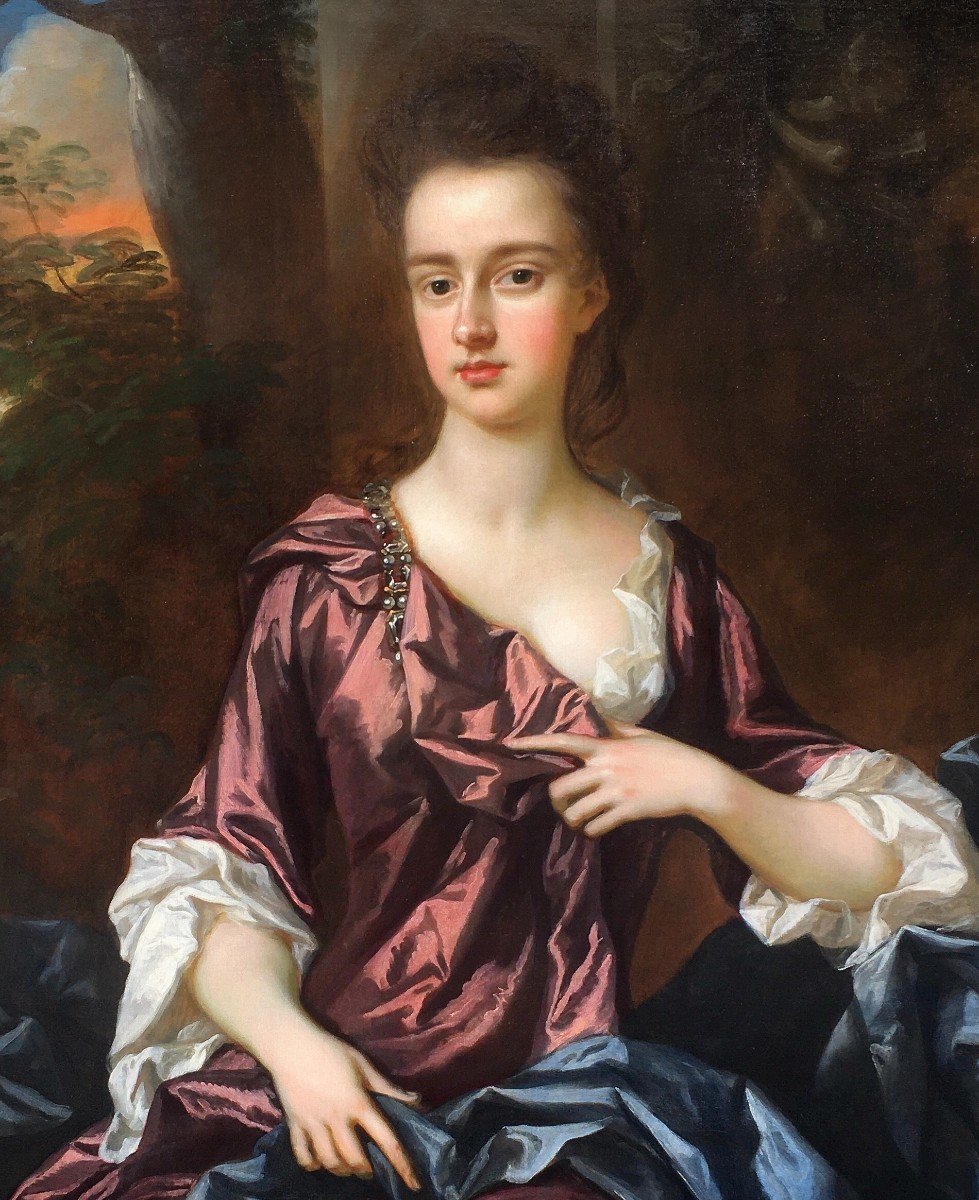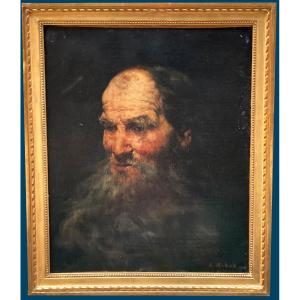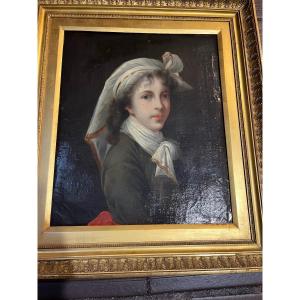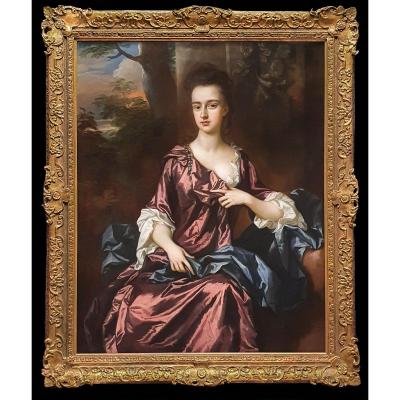The sitter has been depicted seated in a wooded area with a blue sky and setting sun visible in the background. Much of the attractiveness of this elegant large-scale portrait resides in the graceful composition and the beauty of the youthful sitter; the finely painted facial features are superb. It is also striking in its portrayal of the sumptuous fabrics and their decorative richness.
The portrait genre was valued particularly highly in English society. Neither landscapes nor allegorical pictures were ever priced so highly at exhibitions and in the trade as depictions of people, from the highest aristocracy to scholars, writers, poets and statesmen. The hauteur and entitlement that Closterman captures was a perfect fit between aristocratic sitter and artist.
Held in an exquisite good quality and condition gilded antique frame. Beautifully and meticulously rendered throughout, it is a very fine example of British portraiture.
We are grateful to Dr Malcolm Rogers who has attributed the work to John Closterman: “It is a very nice example of the work of John Closterman, painted in the 1690s”.
John Closterman (also spelled Cloosterman, Klosterman) was born in Germany and is thought to have arrived in England in 1681, following the death of court painter Sir Peter Lely. Soon after his arrival Closterman was employed by John Riley as a drapery painter, although the existence of signed works by both artists during the 1680s suggests they also worked independently.
The demand for Closterman’s work soared following the death of Riley in 1691, pushing him further into the higher echelons of society, and by the late 1690s he appears to have enjoyed a position amongst the most distinguished literary and artistic circles.
By November 1698 Closterman was in Spain where he was patronised by the Spanish court and painted full-length portraits of Carlos II and Maria Ana of Neuberg. As is frequently seen throughout the history of travelling artists, Closterman, whilst looking for patronage, also acted as an agent for wealthy English collectors and did much to encourage the collecting of Old Master drawings in England at this time.
After his return and up until his death in 1711, Closterman maintained a successful portrait painting practice and employed at least one assistant, and although in competition with great painters like Sir Godfrey Kneller and Jonathan Richardson, he seems to have sustained an illustrious lifestyle. Closterman died in May 1711, not long after being robbed of his valuables by a devious mistress, an event which supposedly drove him into madness.
Provenance: With fine art dealers Pawsey & Payne, 1 Bury Street, London. Gilbert Pawsey (1881-1951) was a fine art dealer in 1911 and his business partner James Spencer Payne (1853-1931) was a carver and gilder who had also been a manager at a leading firm of London art dealers, Vokins (Pawsey and Payne purchased Vokins and subsequently established their own business around 1910)
An impressed stamp on the stretcher “G Morrill Liner” indicates the painting was treated by the London liner George Morrill sometime between 1857 and 1865. This studio was greatly respected and worked extensively for the National Gallery in London.
Measurements: Height 148cm, Width 123cm, Depth 8cm framed (Height 58.25”, Width 48.5, Depth 3.25” framed


























 Le Magazine de PROANTIC
Le Magazine de PROANTIC TRÉSORS Magazine
TRÉSORS Magazine Rivista Artiquariato
Rivista Artiquariato
